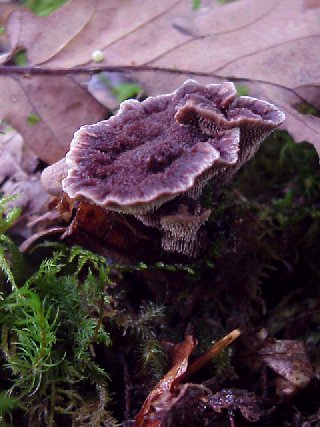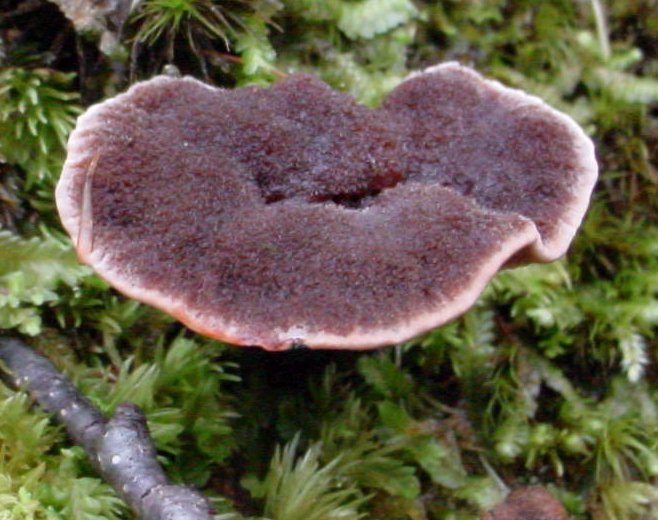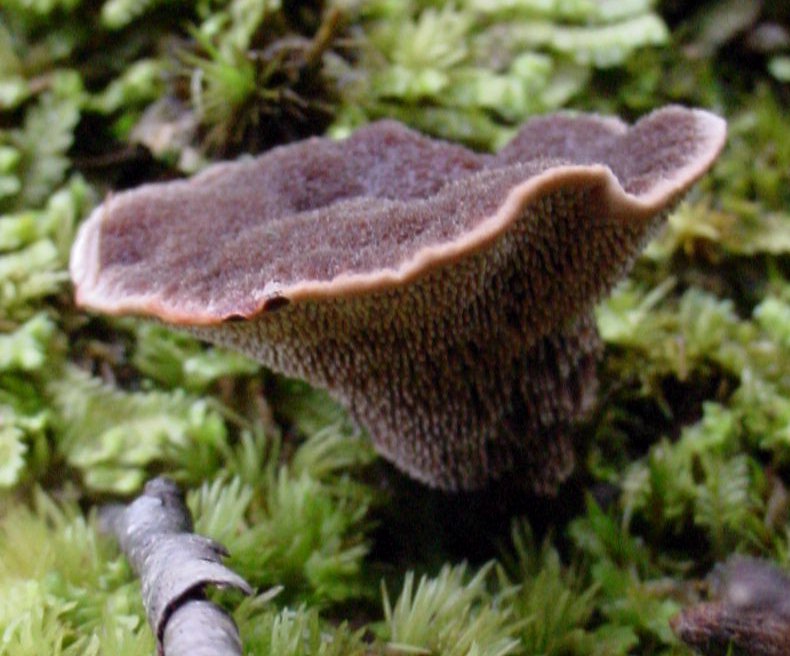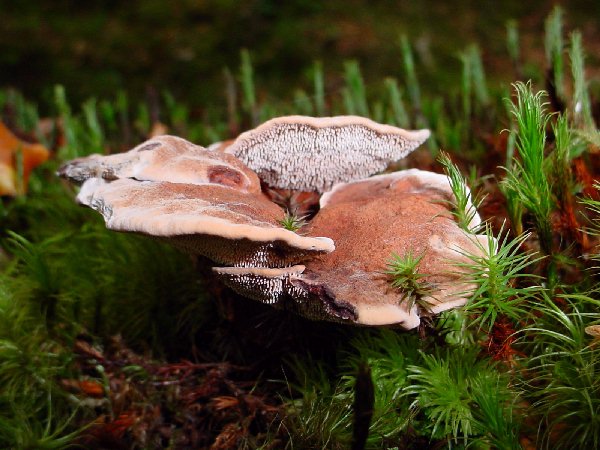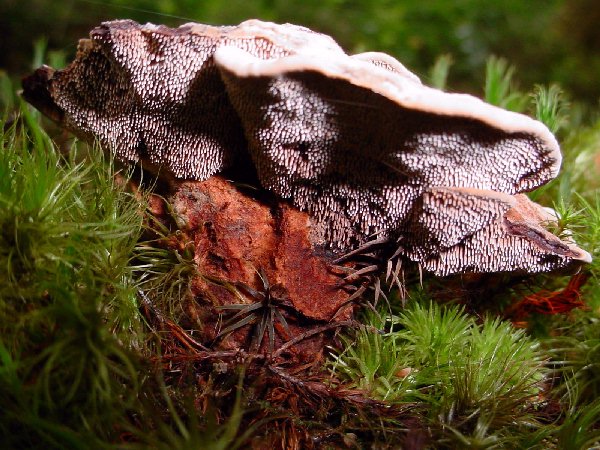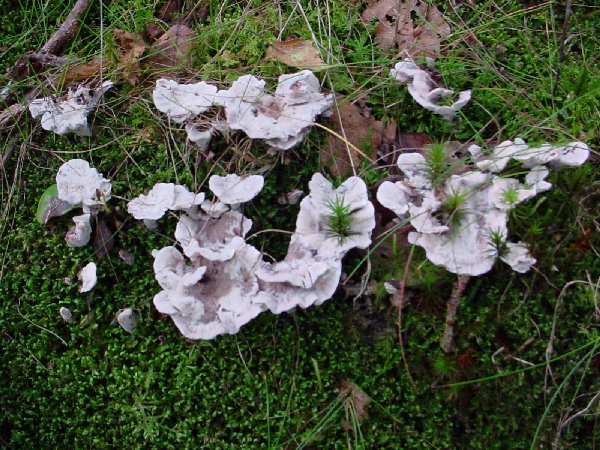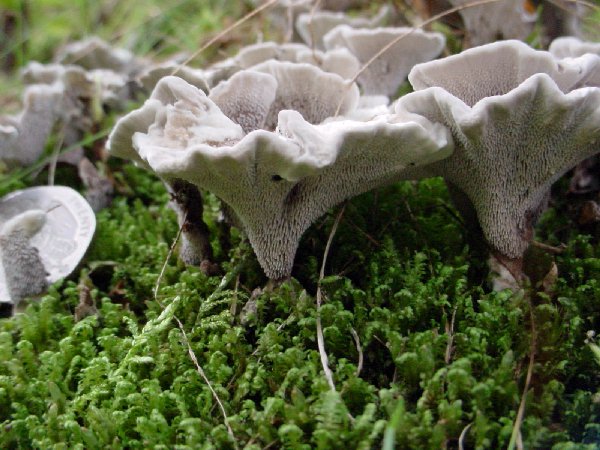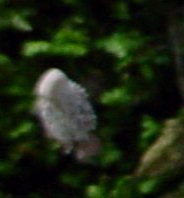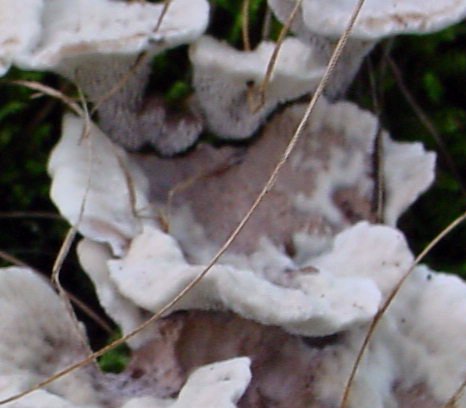Most were at least partly hidden under dead oak leaves and it is only because I bent down to examine a different fungus that I saw them at all.
Initially I thought it was Hydnellum caeruleum and as such my text books mostly stated that this fungus is restricted to the Scottish Highlands but further research revealed that there is also mention of this as ocurring in the New Forest in Hampshire. I have also seen statements to the effect that it does not occur in Wales.
